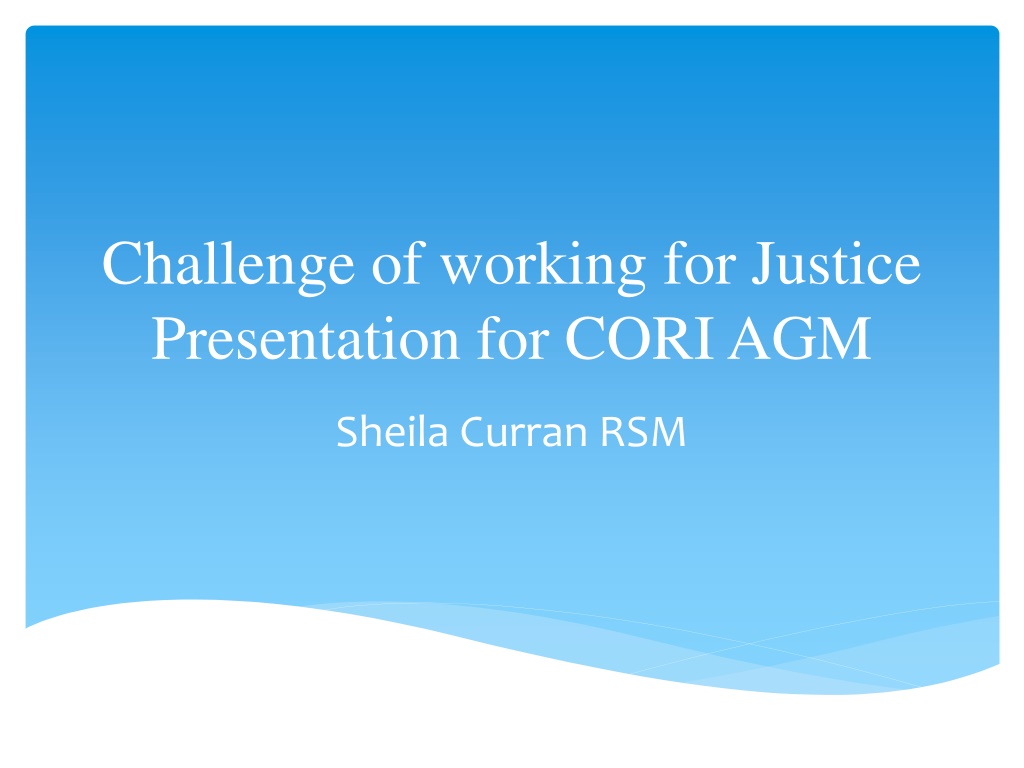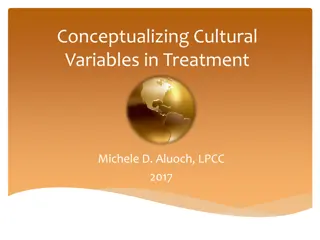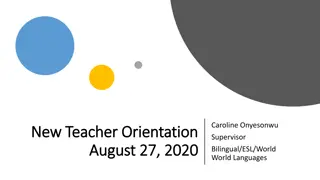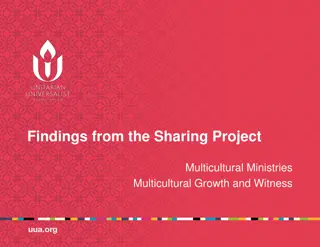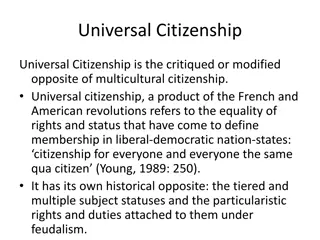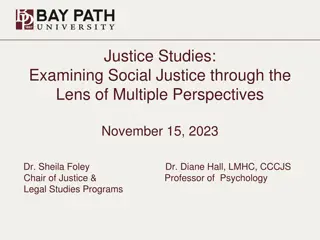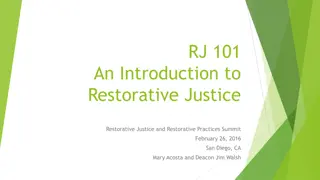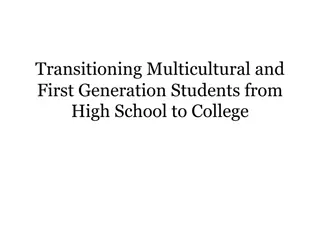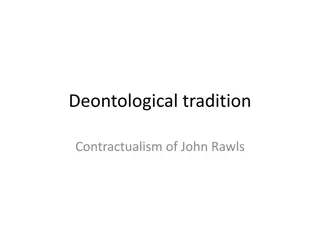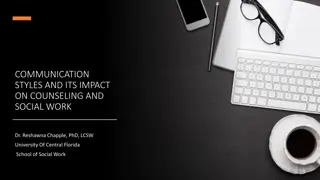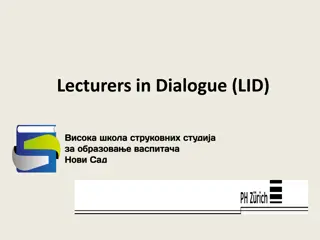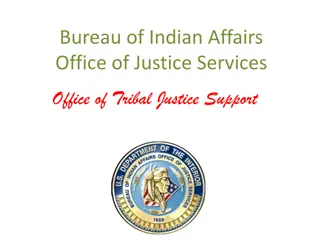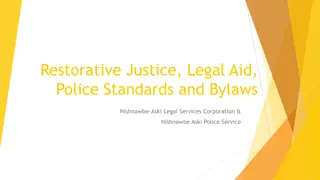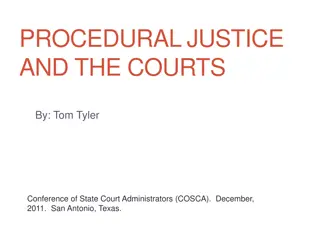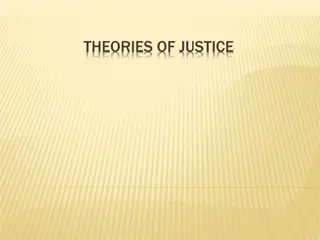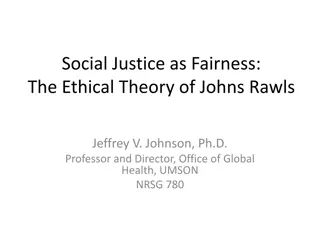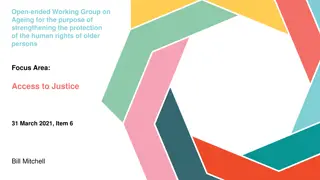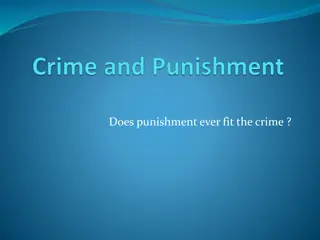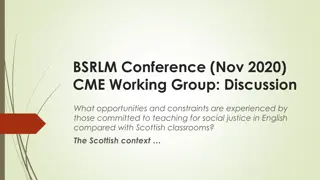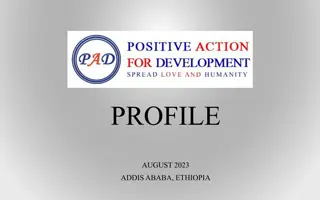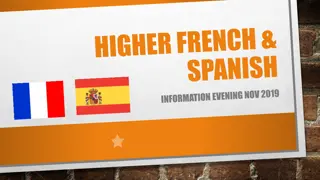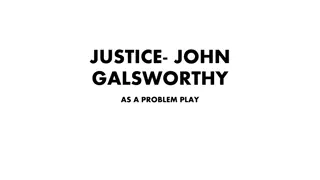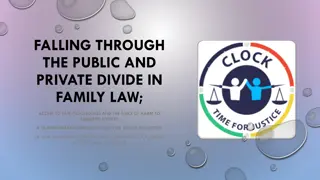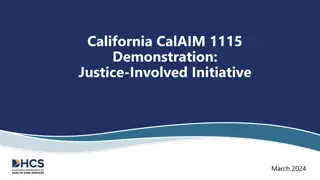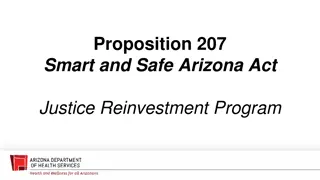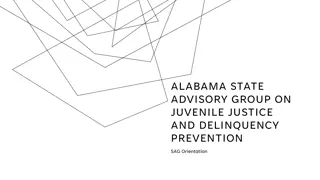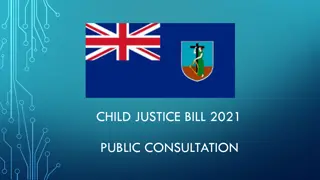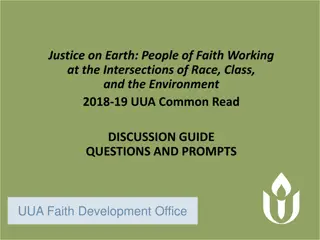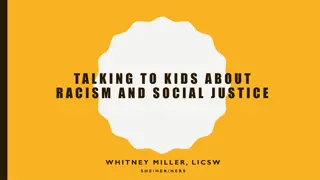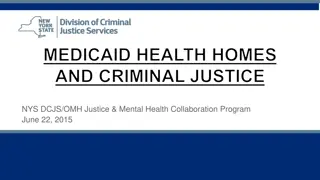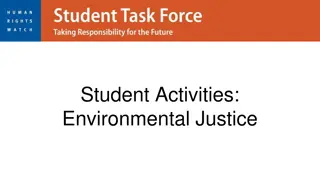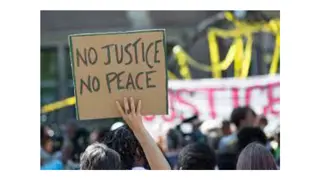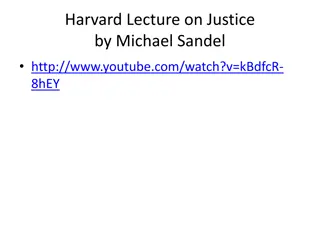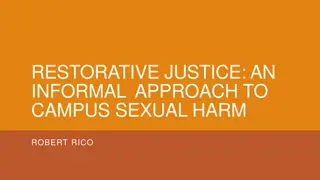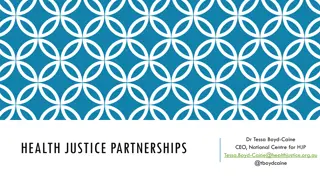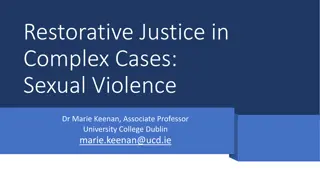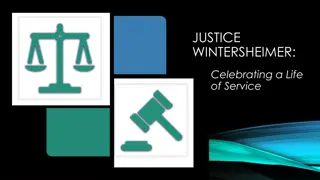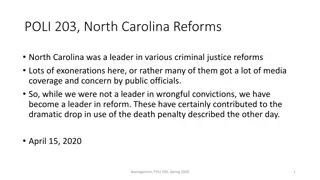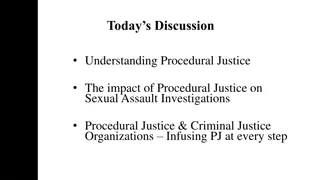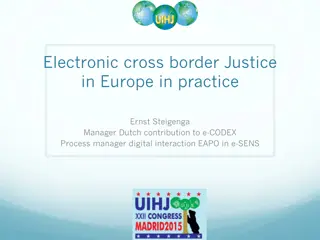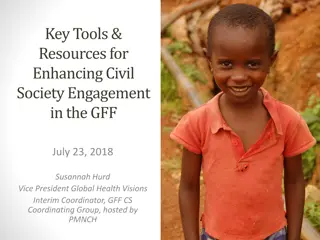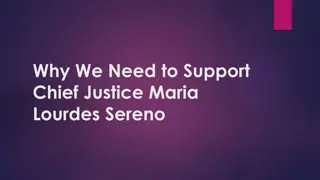Challenges of Working for Justice in a Multicultural Society
Explore the challenges of justice work in response to an interconnected world, focusing on the growing diversity in Ireland and the need for compassion, understanding, and action towards migrants and marginalized communities. Reflect on the voices of otherness, highlighting the call for liberation, critique, and alternative narratives rooted in freedom and justice.
Download Presentation

Please find below an Image/Link to download the presentation.
The content on the website is provided AS IS for your information and personal use only. It may not be sold, licensed, or shared on other websites without obtaining consent from the author. Download presentation by click this link. If you encounter any issues during the download, it is possible that the publisher has removed the file from their server.
E N D
Presentation Transcript
Challenge of working for Justice Presentation for CORI AGM Sheila Curran RSM
Aim of this Presentation To look at the challenges of the work of justice in responding to the signs of the times in relation to the other who is different to ourselves. Using the methodology of SEE, JUDGE and ACT.
Mercy and Justice Year of Mercy 2016 Mercy-ing....action verb Challenge: Mercy and Justice in an interconnected world.
See: Lens: the Growing Diversity in Ireland In last 20 years Ireland has changed dramatically. In 2011 Census Non-Irish nationals were up by 143%. 544,357 living in Ireland representing 199 different nations. Remarkable diversity noted in the range of nations identified in Census 2011. For example: Eastern European Countries, Brazil, Nigeria, Philippines, China, India, Pakistan. (CSO, 2011)
It is not only in the cities! 5.6% of persons living in the pure rural areas of Ireland were non-Irish nationals in 2011. 14.9% of persons living in census towns were non-Irish nationals in 2011. 32.6 the average age of non-Irish nationals in Ireland in 2011. Census 2016: What new information will we receive?
Ireland is a Multicultural Society But .. 8,000 people seeking asylum, half 3,607 are in Direct Provision accommodation. 20,000-26,000 undocumented in Ireland. Ireland will need migrant workers in the coming years.
April 2016, 2,700 new citizens. (Photo: Alan Betson, Irish Times)
Voice of otherness F. Segovia The voice of our otherness becomes a voice of and for liberation: not afraid to expose, critique, and provide and alternative vision and narrative; grounded in mixture as something not to be eschewed and marginalized, but valued and engaged; and committed to the fundamental principles of freedom and justice.
Questions for discussion What is you response to this reality? Is it something you are familiar with? What challenges does it present for you? How do you view the other who is different to yourself?
Judge Encounter with the poor and the encounter with the culturally other are two transversal axis that have confronted, challenged, shaped, and inspired the theory and praxis of mission as discipleship different contexts.
Canaanite Woman in Matthew 15:21-28 The prophetess for the other in our lives
Matthew 15:21-28 Jesus left that place and went away to the district of Tyre and Sidon. 22Just then a Canaanite woman from that region came out and started shouting, Have mercy on me, Lord, Son of David; my daughter is tormented by a demon. 23But he did not answer her at all. And his disciples came and urged him, saying, Send her away, for she keeps shouting after us. 24He answered, I was sent only to the lost sheep of the house of Israel. 25But she came and knelt before him, saying, Lord, help me. 26He answered, It is not fair to take the children s food and throw it to the dogs. 27She said, Yes, Lord, yet even the dogs eat the crumbs that fall from their masters table. 28Then Jesus answered her, Woman, great is your faith! Let it be done for you as you wish. And her daughter was healed instantly.
Analysis of the text Jesus Jesus went ( ) = geographically went to Tyre and Sidon Gentile territory. from there he moved out of his comfort zone, from what was familiar Elijah and Widow 1 Kings 17:9 (Zarephath) Both texts are a reminder that the Promised Land extended as far north as Sidon. While full of non- Israelites, it was still part of Israel s inheritance. It is Jesus who decides to move out .
When the woman approaches Jesus and asks as any Jewish believer would have done ( , ), he did not answer to her, not even a word ( )= he ignored her, he was indifferent. Later when the disciples intervene, and when she asks again, Jesus answers in general he does not addresses her (vv.24, 26). At the end he speaks to her ( ), and acknowledges her ( ...), and grants her what she asked for.
The Woman While she came out, she was crying and she was speaking .( 3 verbs). She is proactive, she announces and denounces. She is not silent. An imperative have mercy on me her first plea is not a concrete action but something deeper, an attitude, a way of living Her second approach in v.25= while she came, she prostrates and begins to speak directly to Jesus again =three other verbs ( )
She kneels (prostrates)before him as if worshipping God. Her words acknowledge Jesus again: ( , ) Help me!! She does not ask for healing . She is a collaborator in providing life she asks for help. She always acknowledges Jesus , (v.27) Jesus acknowledges her faith v.28 .she believes
The Disciples They also move, while they were coming towards Jesus (they request saying ( , )= also three verbs!!. Their request is to get rid of her, not to grant her what she is asking for there is no sign of mercy! They ask Jesus to send her away, they do not want to be disturbed. Where do we place ourselves in relation to the cry for mercy?
Questions for reflection Where do you situate yourself? If you are Jesus who is the woman for you? If you are the woman who is Jesus for you? Or do you indentify with the disciples?
L.Guadiola Snez and E. Wainwright Encounter between two cultures: it is important to look at the power relations in the text? The woman interacts with Jesus despite her ethnic, geographical or gender orientation. She engages Jesus. Her insights demonstrate an active faith. Jesus is confronted with his own ethnocentrism.
A transformative encounter The encounter with the woman was the catalyst that enabled Jesus to see differently and move towards a more inclusive practice. E. Wainwright gives the woman her name Justa had taught him; a recognition that linked her insight into wholeness with that of God whose way, whose dream, Jesus was to establish on earth. (Wainwright, 1995) The other who Jesus treated as dog is now giving him a lesson of human courage and love of life (Guadiola S nez,2002)
Matthews community was concerned about new groups coming into the area. Tyre and Sidon inhabited by Canaanites from the 2nd millenium BCE. Later inhabited by Phoenicians, a name given by the Greeks, which Matthew appears not to follow. They saw themselves as the elected community the chosen one.. Ireland, land of Saints and Scholars do see ourselves as the chosen ones ?
Act The text forces us to reflect deeply in order to be able to change our attitude towards the culturally other and to act differently. How committed are you to building an inclusive community, church and society in Ireland today? How can we overcome our own cultural blind spots? What steps do we need to take to bring about a more inclusive and egalitarian community, church and society?
Acall beyond ethnocentrism Baptism: love one another Our common humanity .comes into being in the light of the other. Mercy needs to be embodied. We need to ACT. The reality of today s world urges us to take diversity seriously and to commit ourselves to a new openness to the other , to the stranger . Conversion to intercultural life and mission demands that we befriend difference and be open to receive the gift that diversity brings into our lives.
Challenges Encounter with the other who is different can enable us to act differently. We talk about justice, equality and quality of life for people yet within the our congregations and the church we have much to achieve. As women, we are the other in our church we have to challenge these unjust structures if we want to model something different to society.
We have to consciously work to deconstruct mechanism of exclusion and asymmetrical power relationships. We need to move from an ethnocentric vision to an intercultural vision and practice .
Context: Universality of the STGs not a them and us
Remember Diversity is our strength. We have to change in the way we treat other who is different whether it is our earth, the poor, travellers, migrants and refugees etc... We need to promote inclusivity.. We need to care for our common home. We need to promote interreligious dialogue and continue to work for a more justice, inclusive and equal society.
Finally The divine is manifested through our actions. We can all take one small step. As St Paul reminds us in Galatians 3:28 There is neither Jew nor Greek, slave or free, male or female, for we are all one in Christ Jesus. Thank You.
